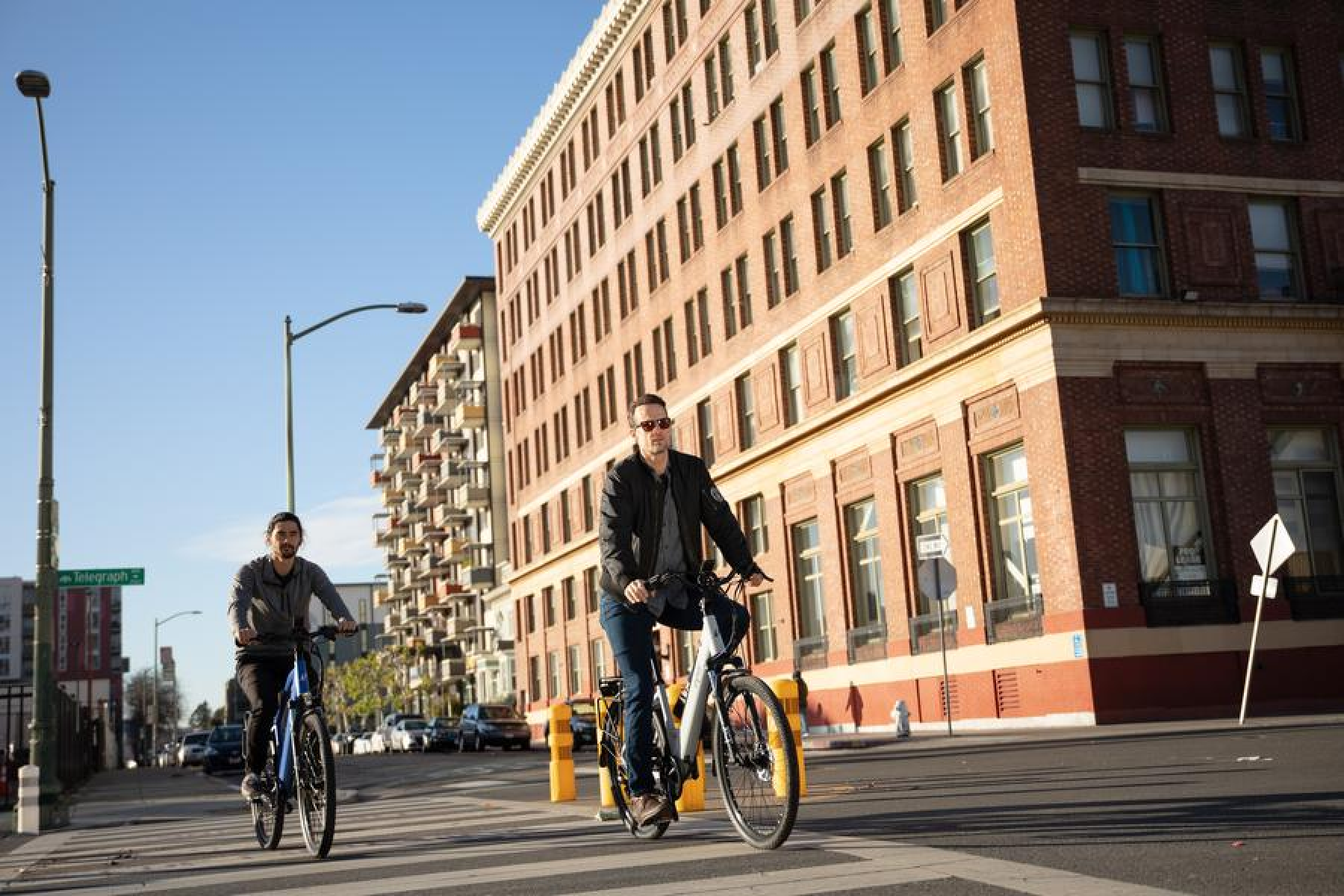Sometimes the rules of electric bikes can seem complicated, so we wanted to clarify and answer some of our most asked questions. Please note that these electric bike rules are specific to California only. Each state has its own rules and regulations regarding electric bicycles.
Something all states follow are the federal regulations regarding eBikes. Electric bike manufacturers offer a wide variety of styles, types, colors, and utility, but at their base, all electric bikes must produce less than 750 watts of power and have a speed limit of 20MPH on the motor alone (though California has some exceptions as you’ll see below). Most eBike manufacturers meet these specifications for their own liability.

So where do electric bikes fall legally? Do we use bike lanes, follow traffic laws, etc?
Electric bikes are considered “motorized bicycles” in California. And for the most part, they are subject to the same laws as bicycles. Stopping at traffic lights, using bike lanes, using hand signals to alert nearby drivers, all of the rules regarding bicycles also apply to electric bikes.
What are the California specific laws regarding different classes of eBikes?
On October 7, 2015, California Governor Jerry Brown signed A.B. 1096, legislation that clarifies the regulation of eBikes in California. There are three types of electric bikes that are described in more detail in the chart below.

This new CA legislation clarifies the state’s laws on electric bikes that travel in excess of 20MPH and allows for the use of 28MPH-capable Class 3 electric bikes on public roads. Before the law’s passing, federal law stated that the maximum assisted speed for an electric bike was 20MPH. Helmet use for Class 3 electric bikes is required, and helmets will also be required for any electric bike rider under the age of 18.
Class 3 electric bikes cannot be ridden by anyone under the age of 16, and Class 3 electric bikes will also be banned from using Class 1 bike paths (a.k.a. ‘multi-use paths’) but may use bike lanes and protected bike lanes on public roadways.
Class 2 electric bikes that are equipped with a throttle and that can function even without pedaling will be limited to a top assisted speed of 20MPH, however, they will be permitted on bike paths, unlike their faster Class 3 counterparts.
What are the age limits?
There is no minimum age requirement for Type 1 and Type 2 eBikes. For Type 3 eBikes, the minimum age to ride is 16.
Are helmets required?
Helmets are required on all types of electric bikes for children under the age of 17. For adults, they are only required for Type 3 eBikes.
Do you need a driver’s license to ride an electric bike?
No. Driver’s licenses, registration, insurance, and license plat requirements do not apply. An electric bicycle is not a motor vehicle. Though drinking and driving laws do apply.
How does it work on buses and BART?
You can transport your eBike on buses and BART just like you would a traditional bicycle.









Leave a comment
This site is protected by hCaptcha and the hCaptcha Privacy Policy and Terms of Service apply.